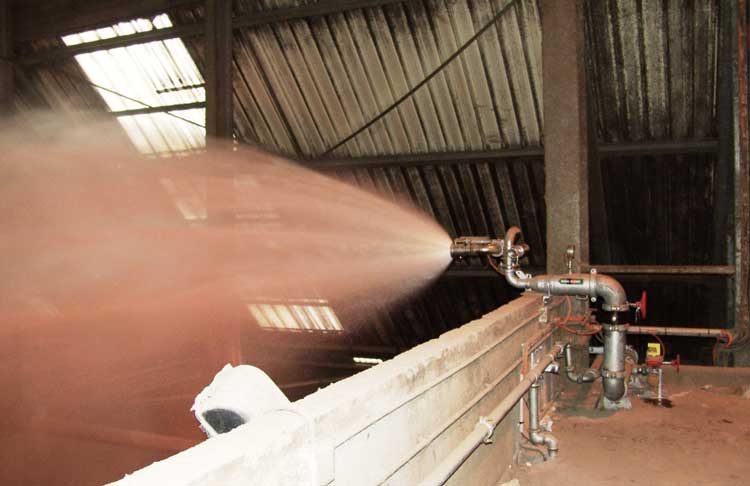Low-, medium- and high-expansion foam
- Low expansion: petroleum spill fires
- Medium expansion: flammable liquid secondary containments
- High expansion: plant protection product warehouses.

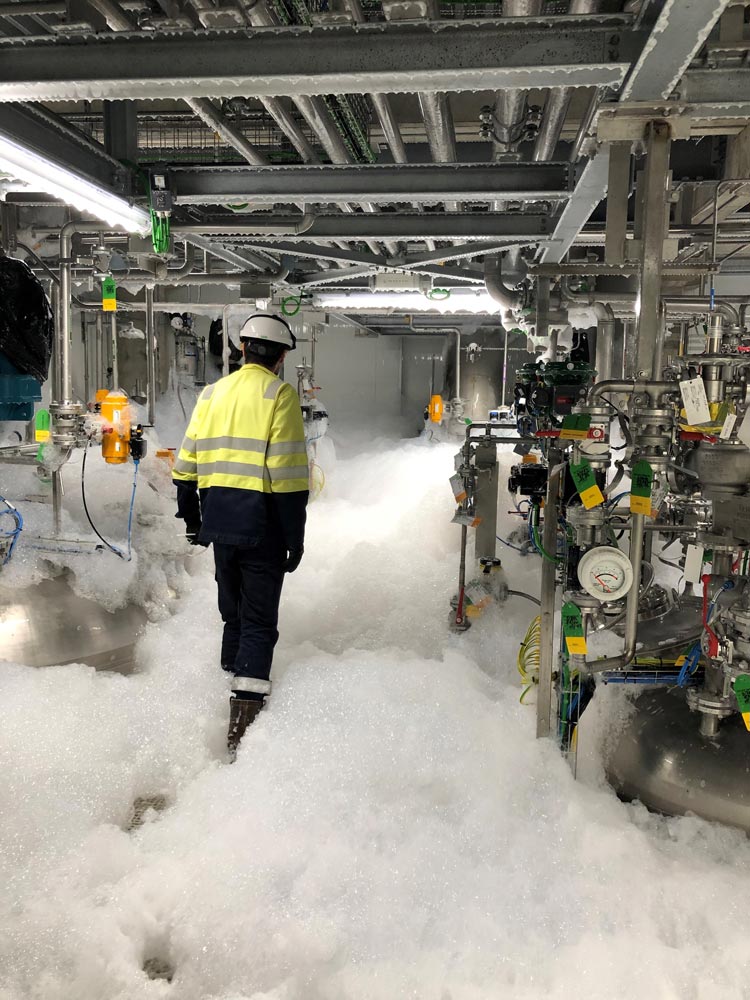
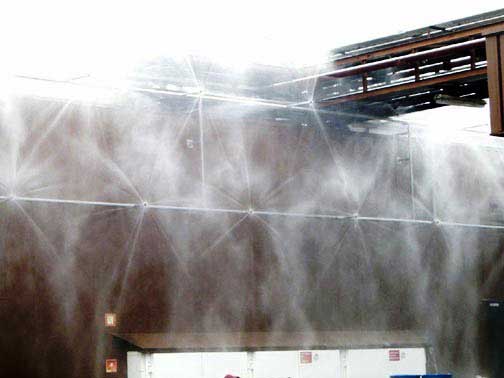
Water curtains
Water curtains are a specific type of deluge system: flat-jet spray heads (drenchers, fantails) create a “wall” of water, forming a true insulating heat shield. They are used where a fire wall cannot be built to physically separate two parts of a site.
Typical protection application:
- Separation between a flammable liquid storage area and tanker unloading area.
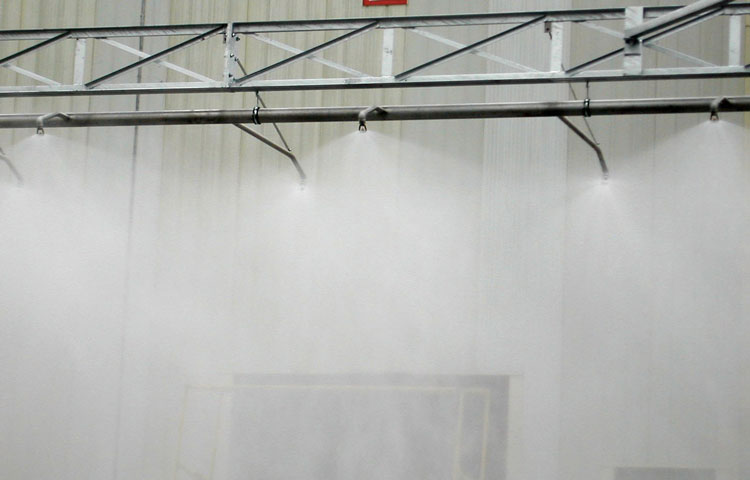
Deluge systems
Deluge-type systems are sprinkler installations (with water supply, valve, piping, etc.) equipped with specific open heads (without fusible elements). This type of installation is controlled manually and/or by an external detection system (flame detection, pilot sprinkler system).
Typical protection applications:
- Flammable liquid tanks
- Tanker unloading areas
Monitors
Monitors are used to attack a fire from a distance. Numerous configurations are possible depending on the risk to be protected:
Automatic oscillating monitor, remote joystick control, etc.
Head with variable output and jet, long-range capability, etc.
Use with fresh water, sea water, additive, etc.
Typical protection applications:
- Waste storage pits (incinerators)
- Petroleum storage facilities
